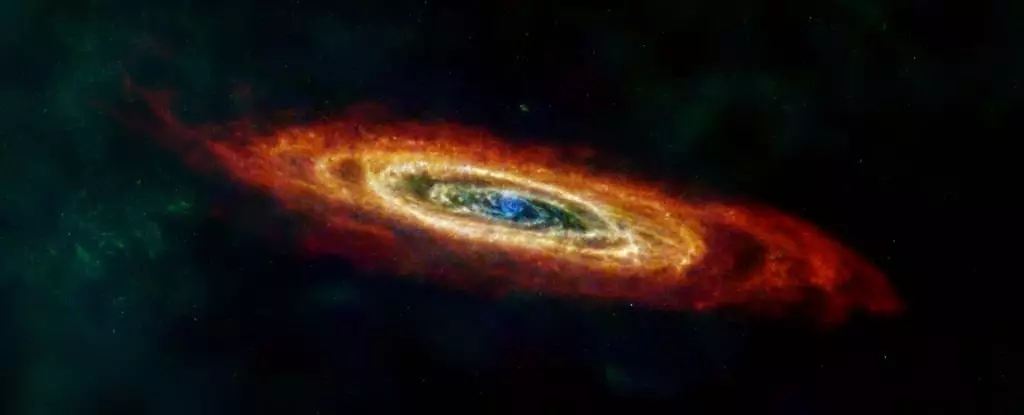The universe is filled with captivating phenomena, and among these, the life cycle of massive stars holds a particular fascination. Typically, stars that are significantly more massive than our Sun culminate their life stories with spectacular explosions known as supernovae. However, recent research has unveiled a remarkable discovery: certain stars may bypass this explosive finale entirely, collapsing directly into black holes without detonating as supernovae. This paradigm-shifting finding has significant implications for our understanding of stellar evolution and the fate of massive stars.
Massive stars, generally classified as those exceeding eight solar masses, spend much of their life in a precarious equilibrium between the forces of gravity and the outward pressure generated by nuclear fusion. Throughout their lifespan, these stars burn hydrogen and, as they exhaust their fuel, shift to heavier elements. This process ultimately leads to a point where the outward pressure diminishes, unable to counter the relentless pull of gravity. When this occurs, the core succumbs to gravitational forces, leading to catastrophic collapse — typically resulting in a supernova explosion.
Supernovae are not merely destructive events; they serve as cosmic factories, synthesizing heavy elements and dispersing them throughout the universe. Each explosion can momentarily outshine entire galaxies, marking the end of a massive star’s life in a brilliant display. However, the occurrence of a supernova is far from guaranteed for all massive stars.
In 2023, a research team led by Kishalay De at the Kavli Institute for Astrophysics and Space Research at MIT made a groundbreaking observation regarding a massive star in the Andromeda galaxy, designated M31-2014-DS1. Unlike typical supernova remnants, this star exhibited a strange evolutionary path. Observations noted that while it showed significant brightness in mid-infrared wavelength, for over a thousand days, its luminosity remained surprisingly constant. Following this duration, it transitioned to a dramatic dimming phase over approximately another thousand days, before ultimately fading from detection. Intriguingly, there was no accompanying optical outburst often expected from a supernova event.
Rosy red flags wave not only due to the absence of a supernova explosion but also because of the star’s extraordinary mass loss. Research indicated that M31-2014-DS1 originated with an initial mass of roughly 20 solar masses and culminated its nuclear-burning phase with around 6.7 solar masses, raising essential questions about stellar evolution.
Supernovae, specifically core-collapse supernovae (which include Type II supernovae), are complex mechanisms characterized by the collapse of a star’s core, driven by processes like electron capture and neutronization. This leads to a massive release of energy, mostly in the form of neutrinos, that facilitates a powerful shock wave, intended to expel the outer layers of a star. However, this energetic dance can falter; when the neutrino shock fails to revive, as seen with M31-2014-DS1, it culminates in the formation of a black hole instead.
The findings from M31-2014-DS1 illustrate that in some circumstances, the core’s collapse may ensue without a witnessed supernova explosion. Observational data hinted at material loss consistent with a typical supernova evasion, yet the predicted luminosity signature remained absent. Researchers concluded that up to 98% of M31-2014-DS1’s mass inevitably fell into the core, forming a black hole with an estimated mass of 6.5 solar masses.
The implications of such a scenario stretch far beyond the single case of M31-2014-DS1. It underscores a paradigm shift in our understanding of stellar deaths. The observation suggests that up to 30% of massive stars may ultimately collapse into black holes without ever completing a supernova phase. Furthermore, this revelation invites new inquiries about whether phenomena previously listed as supernovae may, in fact, be instances of “failed” supernova events.
Only a few observed instances, such as the well-known N6946-BH1 in the Fireworks Galaxy, support this theory of ‘failed’ supernovae. Such cases highlight the necessity for continued observations and research to understand the complex life cycles of massive stars better.
The enigma surrounding massive stars and their potentially explosive resolutions continues to reveal the intricacies of our universe. With discoveries like M31-2014-DS1, we’re pushed to reconsider the very nature of stellar evolution and expanding the boundaries of our cosmic knowledge. The mysteries they hold are yet to be fully unlocked, laying the groundwork for future explorations into the grand tapestry of the stars.


Leave a Reply